Monthly economic brief: December 2022
The monthly economic brief provides a summary of latest key economic statistics, forecasts and analysis on the Scottish economy.
This document is part of a collection
Consumption
Consumer sentiment fell sharply in October to its lowest level in the time series.
Consumer sentiment
- Consumer sentiment indicators continue to be highly sensitive to the rapidly changing economic environment as households and consumers face significant challenges from the sharp rise in inflation and cost of living.
- These challenges have instensified since the start of the year, which has been reflected in a sharp drop off in the Scottish Consumer Sentiment Indicator.
- Latest data show consumer sentiment declined considerably in October (-29.4 down from -20.5 in September). Overall, consumer sentiment has fallen 36.7 points since the start of the year and is at its lowest level in the time series.[15],[16]
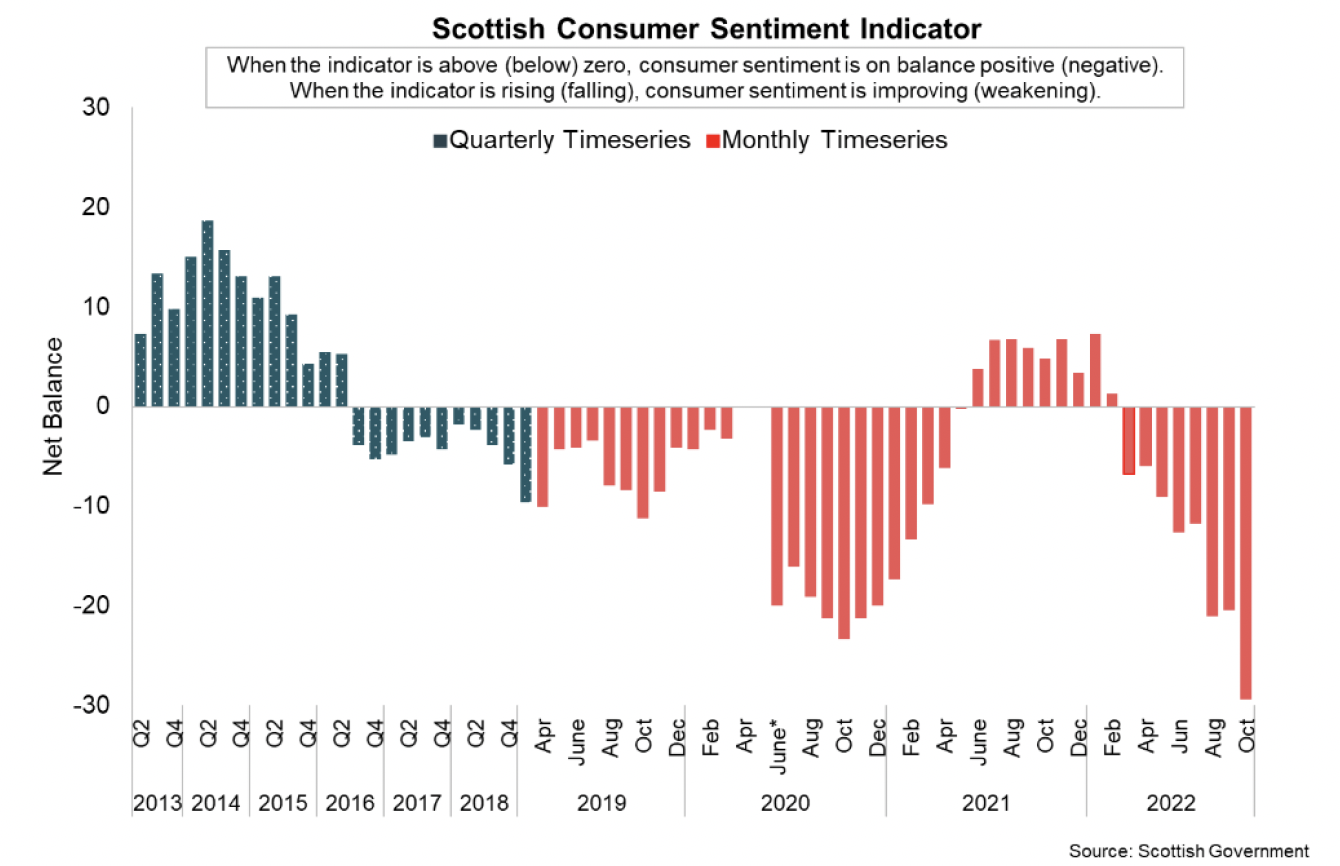
- The latest fall in sentiment in October has been broad based regarding the economy, security of household finances and relaxedness about spending money.
- On the economy, respondents on balance consider current economic circumstances to be worse than last year (-30.7, down from -24.5 in September) and expect the economy to deteriorate over the coming year relative to the current situation (-3.2). The level of optimism has been on a downward trend since July 2021, and has entered negative territory for the first time since March 2020.
- In terms of households personal finances, respondents on balance continued to report that their household finances are less secure than 12 months ago (-36.5, down from -29.6 in September). Furthermore, looking ahead, respondents increasingly expect their financial security to fall over the coming year (-18.1, down from -13.7 in September), with both indicators falling to their lowest levels in the time series.
- Furthermore, since the beginning of the year, households have been increasingly uneasy about spending money as inflationary and cost of living pressures have increased. In October, the spending indicator fell 18.8 points to -58.5, its lowest level in the time series, indicating a signficant weakening in sentiment about spending.
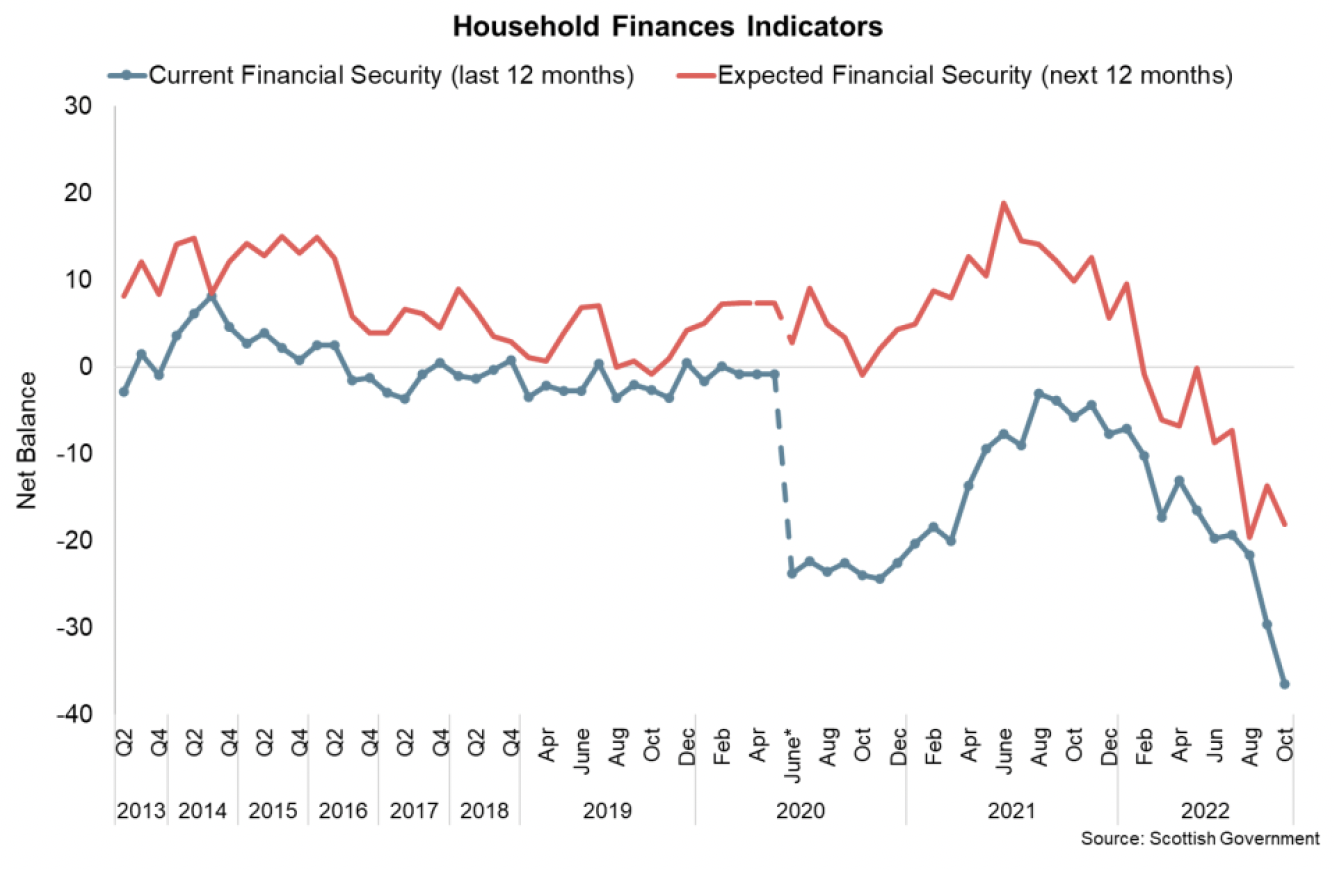
- Overall, the fall in sentiment since the start of the year has been driven by a combination of falling sentiment regarding the economy as a whole, and falling sentiment regarding personal household financial circumstances and personal relaxedness to spending money.
- This reflects the challenging economic and financial environment households are facing and the risks to consumption growth over the months ahead. This is seen in other household surveys. At a GB level, the ONS Public Opinions and Social Trends survey for November showed that 77% reported being worried about rising costs of living, 45% reported finding it difficult to afford energy bills and 34% reported finding it difficult to afford rent or mortgage payments.[17]
- The proportion of adults taking actions because of increased cost of living has risen over the year, with 68% spending less on non-essentials, and 63% using less fuel in their homes.
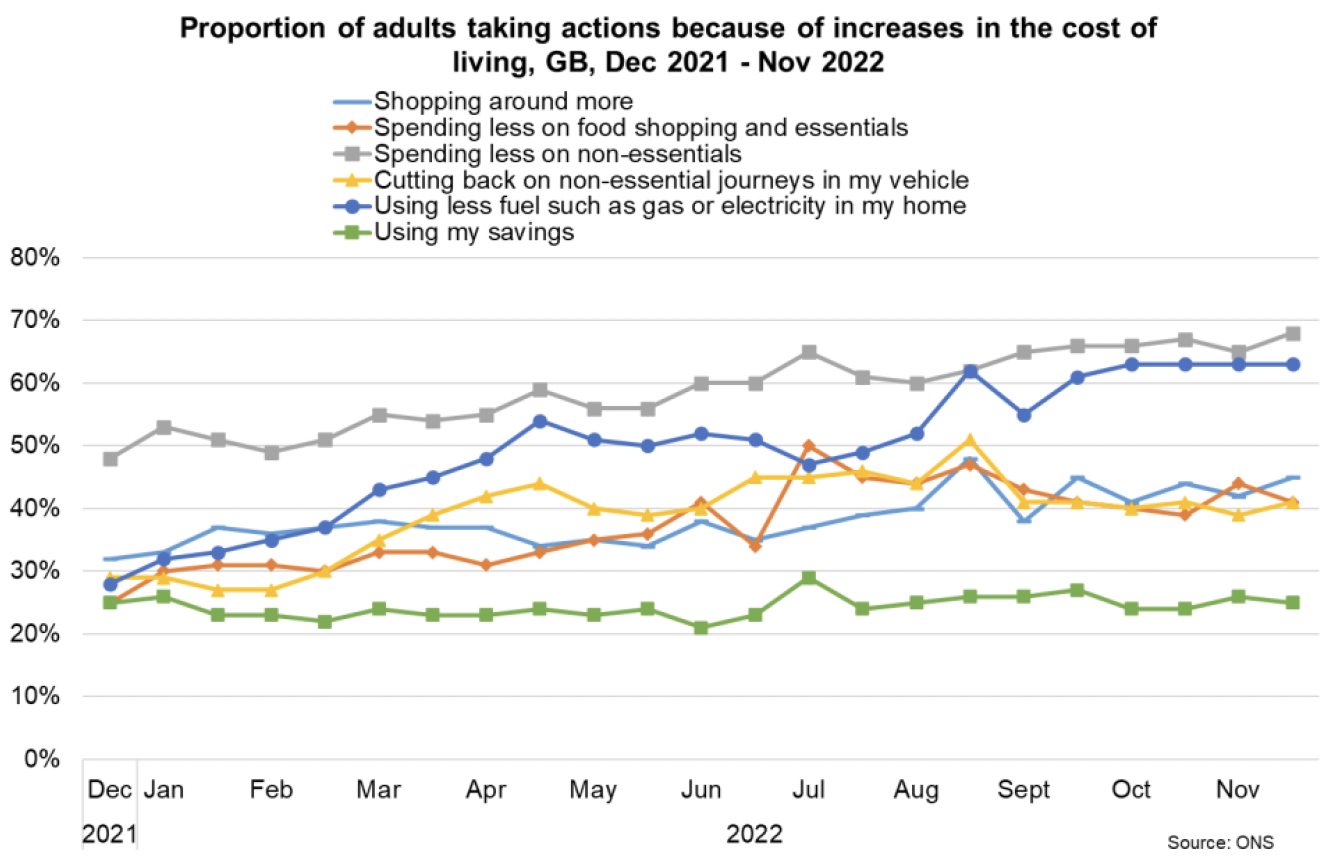
Retail Sales
- GB retail sales volumes increased by 0.6% in October 2022, however fell by 2.4% in the 3-months to October, compared to the three previous months, continuing the downward trend since summer 2021. It is also the lowest three-month growth rate since restrictions were in place in March 2021.[18]
- Compared to the same period a year earlier, sales volumes decreased 6.1% in the three months to October 2022, while sales values increased 4.7%. As illustrated in the chart below, the gap between GB retail sales value and volume sold has widened, reflecting the rise in inflation.
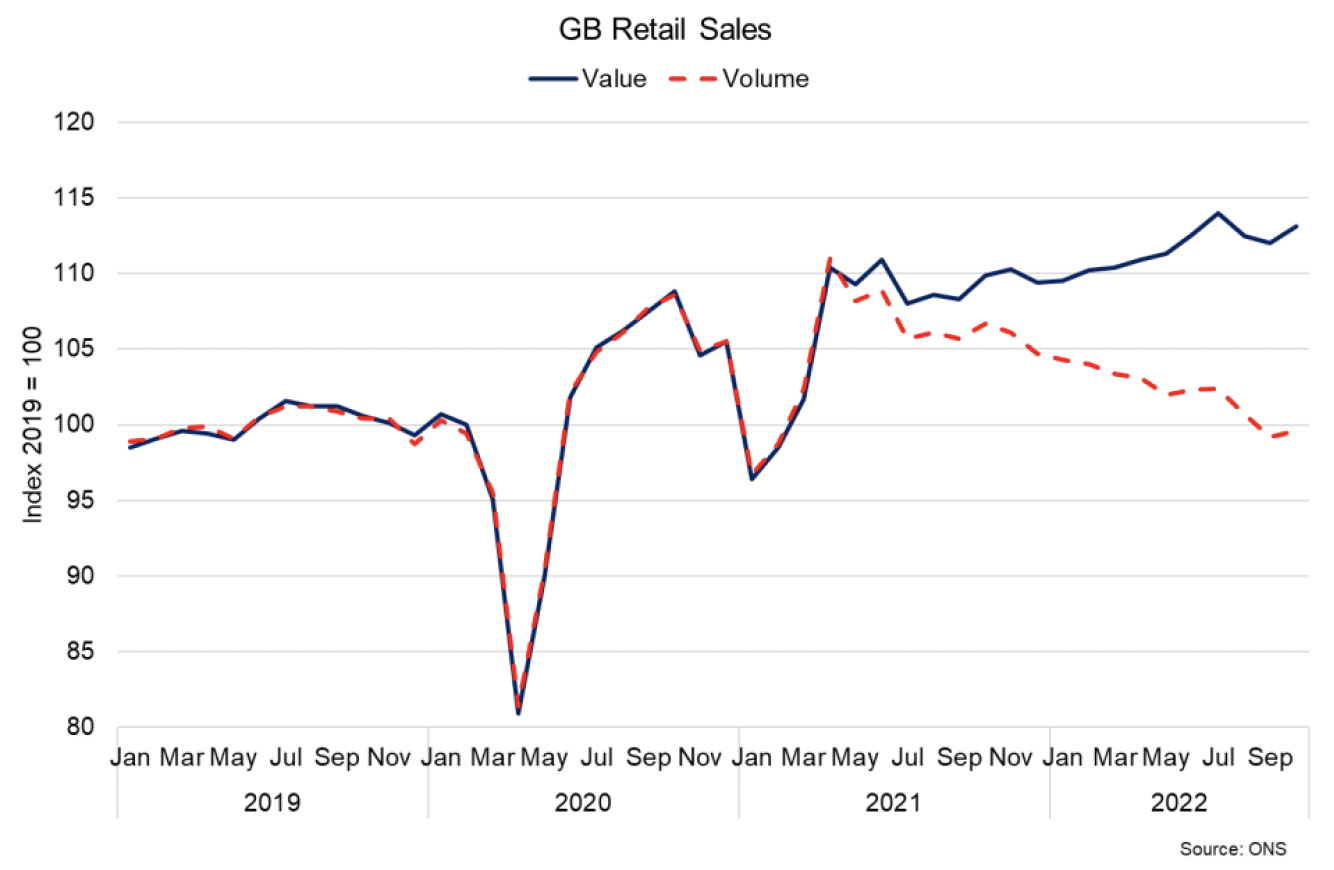
- Over the month to October, there was an increase in sales volumes in all main sectors (non-food stores, non-store retailing and fuel), which offset a fall in food stores sales, which fell 1.0%. The ONS bulletin highlights that in recent months, supermarkets have highlighted that they are seeing a decline in volumes sold because of increased cost of living and food prices.
Household Savings and Consumer Credit
- The impacts of the rise in cost of living and the increase in Bank Rate on household savings and consumer credit are continuing to develop. This is on the back of savings and credit flows continuing to normalise over the past year following notable shifts during the pandemic.
- At an aggregate level, latest Bank of England Money and Credit data shows net flows from UK households into deposit-like accounts fell in October. Net inflows sat at £6.4 billion over the month, down from £8.9 billion in September, however was above the average monthly net flow of £5.3 billion over the previous 6-months during which inflows trended downward before starting to pick up in the second half of the year.[19]
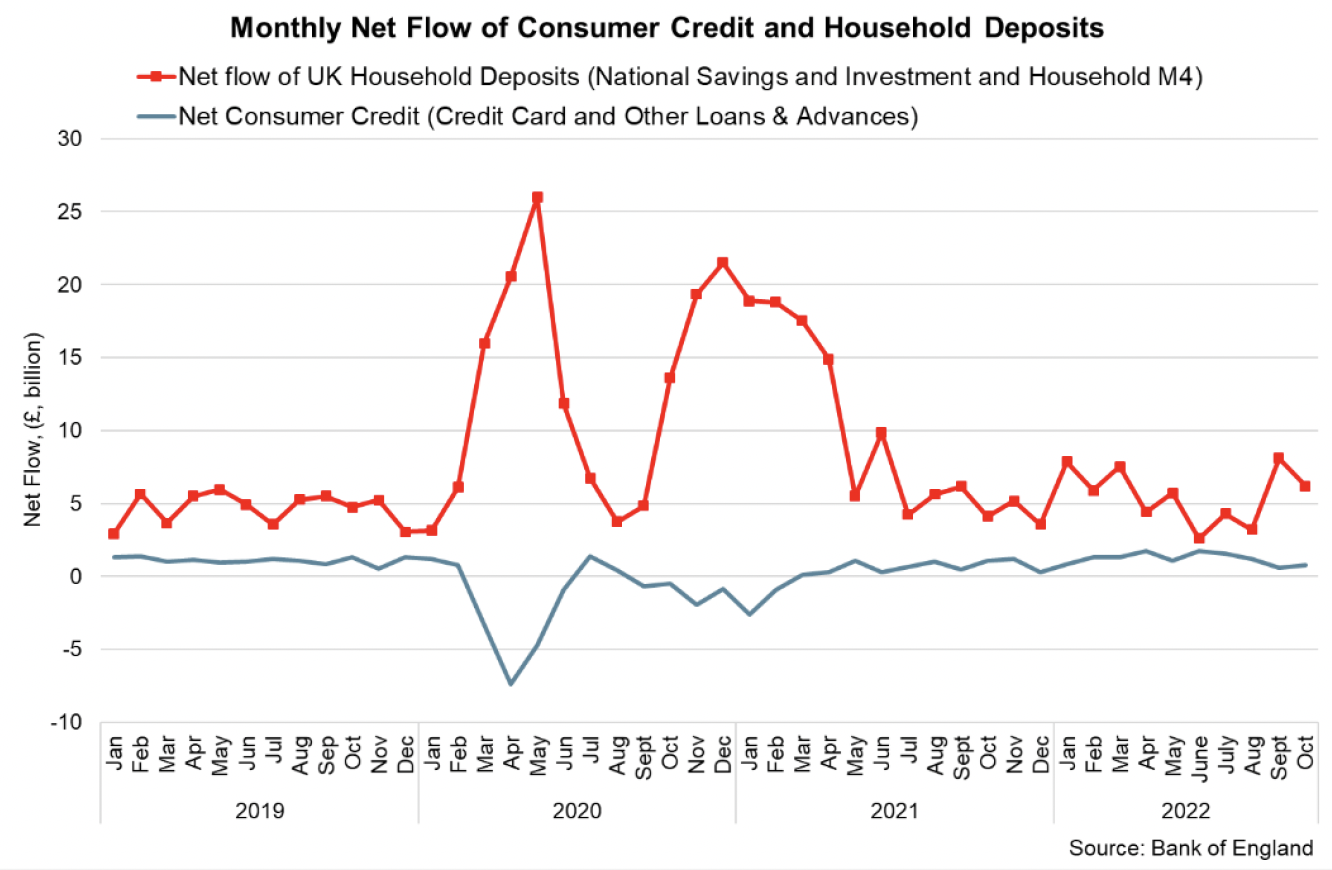
- Alongside this, consumers borrowed an additional £0.8 billion in October, following £0.6 billion of borrowing in September. This is below the previous 6-month average of £1.3 billion during which net consumer credit has trended downwards.
- Recent movements may reflect that at an aggregate level, higher inflationary pressures and tightening monetary policy/higher interest rates may have started to lower credit demand and attracting savings.
Contact
Email: OCEABusiness@gov.scot
There is a problem
Thanks for your feedback